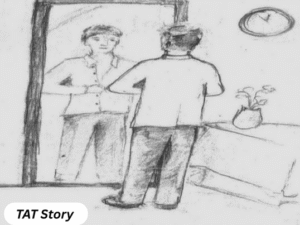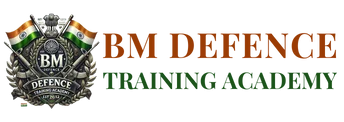Understanding the Thematic Apperception Test in SSB Interviews
When I first heard about the Thematic Apperception Test (TAT) during my preparation for the Services Selection Board (SSB) interview, I was both curious and a bit nervous. The idea of writing stories based on ambiguous images under limited time interval constraints felt daunting. But as I delved deeper, I realized that the TAT isn’t just a test—it’s a window into who you are, designed to uncover the qualities that make a great officer in the Indian Armed Forces basically it assesses the personality and suitability for the armed forces as an officer. In this article, I’ll walk you through everything you need to know about the TAT, sharing insights from my own journey, practical tips, and a glimpse into why this test matters so much.
Hello! I am the director of this prestigious defence academy in Dehradun, I have done my MA Psychology and I want aspirant should know each and every aspect about the SSB Interview. TAT is the first psych test in the SSB and then continue with three other test which is also the important aspects for your OLQs showing the same OLQs in these test is important. Let us continue our topic.
What Is the TAT?
The TAT is one of the four psychological tests conducted on the second day of the SSB interview, a five-day selection process for candidates aspiring to join the Indian Army, Navy, or Air Force. It’s a projective test, meaning it’s designed to reveal your subconscious thoughts, emotions, Ideas and personality traits through the stories you create. Unlike a math exam with right or wrong answers, the TAT taps into your imagination, showing psychologists how you think, solve problems, courage, leadership, social skills and approach challenges.
The test was originally developed in the 1930s by American psychologist Henry A. Murray(TAT Theory) and Christiana D. Morgan(Morgan Interview Theme Technique). In the SSB, it’s adapted to assess Officer-Like Qualities (OLQs)—the 15 traits like leadership, courage, teamwork, and initiative that define a military officer. When you sit down for the TAT, you’re not just writing stories; you’re giving the SSB a peek into your mind and heart.
How Does the TAT Work?
Picture this: you’re in a room with other candidates who have already screened in , a projector screen in front of you, and a booklet in your hand. The psychologist gives a brief introduction, explaining that you’ll see 12 slides—11 with images and one blank. Each slide will appear for 30 seconds, and you’ll have 4 minutes to write a story about it. The blank slide? That’s your chance to write anything you want. Sounds simple, right? But the ticking clock and the need to make every story count can make it intense.
Each story should have:
- A Hero: The main character who drives the story (think of someone relatable, not a superhero).
- A Challenge: A problem or situation the hero faces.
- A Resolution: How the hero tackles the problem and what happens in the end.
The images are deliberately ambiguous—maybe a person standing in a field, a group in discussion, or someone in a crisis. This vagueness is the key: it forces you to project your own thoughts and values onto the scene. The blank slide, meanwhile, is like a blank canvas, letting you showcase your creativity and personal strengths where you can evaluate any one or two factors like Planning and Organizing Ability, Social Adjustment, Social Effectiveness and Dynamism.
Why Is the TAT Important in SSB Interview?
I remember talking to a friend who had been through the SSB. He told me, “The TAT isn’t about how well you write—it’s about who you are.” That stuck with me. The SSB uses the TAT to understand your personality in ways a questionnaire or interview can’t. Here’s why it matters:
- Reveals Your Subconscious: The stories you write reflect your values, fears, and motivations. If your hero is always helping others, it shows you’re empathetic. If they’re solving problems creatively, it highlights your initiative.
- Tests Officer-Like Qualities: The SSB looks for 15 OLQs, like effective intelligence (smart problem-solving), social adaptability (working well with others), and courage. Your hero’s actions should reflect these traits.
- Checks Consistency: Psychologists compare your TAT stories with your responses in other tests, like the Word Association Test (WAT), Situation Reaction Test (SRT), and Self-Description Test (SDT). If your stories match your personality, it builds trust in your profile.
- Handles Pressure: Writing 12 stories in about an hour, with just 4 minutes per story, tests how you perform under stress—a must for military life.
The TAT isn’t about being a great storyteller. It’s about showing you have the mindset to lead, inspire, and serve.
What Do Psychologists Look For?
When I started practicing for the TAT, I wondered, “What are they even looking for in these stories?” After some research and guidance from mentors, I learned that psychologists focus on a few key things:
- The Hero’s Actions: Your hero should be proactive, realistic, and display OLQs. For example, if the image shows a fire, a hero who organizes a rescue shows leadership, while one who panics might suggest emotional instability or he/she has the lack of courage.
- Story Themes: If your stories often focus on teamwork or achievement, it reveals what drives you. Repeated negative themes, like crime or failure, can raise red flags unless the image demands it.
- Emotional Tone: Are your stories optimistic and solution-focused, or do they feel gloomy? A positive tone reflects resilience, a key trait for officers.
- Realistic and Logical apperception: Your stories should make sense. A hero single-handedly stopping a disaster might sound heroic, but it’s unrealistic unless backed by logical steps.
- Variety: Writing similar stories for every image suggests limited imagination. Each story should feel fresh and tailored to the image.
The trick is to let your personality shine through naturally. Don’t try to “game” the test—psychologists can spot rehearsed or copied stories a mile away.
Types of TAT Images
The images in the TAT are designed to spark different responses. Based on my preparation, here’s what you might see:
- Reactionary Images: These show urgent situations, like an accident or a person in danger. They test how you handle crises. For example, an image of a burning house might prompt a story about a rescue operation.
- Visionary Images: These are neutral, like two people talking or a person in a field. They give you room to be creative and project your thoughts.
- Emotional Images: These evoke feelings, like a lonely figure or a family scene. They reveal your empathy and emotional intelligence.
- Blank Slide: The blank slide is your chance to tell a story from your life or imagination. Many candidates prepare a story in advance, often based on a real incident that highlights their strengths.
A Sample TAT Story
1).

Story: Arun, a 21-year-old boy, began his CDS preparation. Taking guidance from his seniors and speaking to those who had previously qualified CDS, Arun explored the lengths and breadth of CDS through the internet and Library. Arun along with his friends Ragu and Nitya, collectively analysed PYQsv and syllabus, devised a weekly and monthly plan. He divided time for different papers- English, General Knowledge and Mathematics. They tracked their progress through this tracker and in addition, every morning he used to talk to his grandfather, an ocean of knowledge, on various topics. After passing the written examination, Arun got into the preparation for SSB. Reading current events, doing physical activities and discussing topics with his friends in the group helped him have in depth knowledge on different topics. SSB was a great experience and was delighted to get recommended. The same was the outcome for Ragu and Nitya. Moments of joy and achievement were seen in every member of their families.
2).

Story: –Ramesh, was getting out of the college after doing his NCC training when he saw the Tonga and the car collide with each other and one person fell down from the cart and got injured. He immediately rushed to the location and so did some of his buddies. They helped the injured and put him in the same car and rushed to the hospital while other buddies and passers- by helped clear the deberies and restore the traffic, this being evening traffic hour. Enroute Ramesh gave first and informed his family and told he is fine. Treatment was given in the hospital after checkup and the injured was allowed to go home with his family members. Ramesh also called up traffic police, told them of the incident and suggested if the area can be posted with sepoy for traffic management.
Tips to Ace the TAT
Preparing for the TAT was a game-changer for me. Here are some tips that helped me feel confident:
- Practice Daily: Write 2–3 stories a day using sample images. Time yourself (30 seconds to observe, 4 minutes to write) to mimic test conditions. Websites like Dehradun Military Academy is goldmines for practice material.
- Show OLQs Through Actions: Don’t just say your hero is brave—show it. Instead of “Ravi was courageous,” write, “Ravi led a team to rescue trapped hikers during a storm.”
- Keep It Real: Your hero should be relatable, not a superhero. Ground your stories in practical solutions, like organizing a team or using available resources.
- Prepare for the Blank Slide: Have a versatile story ready, ideally based on a real-life incident where you solved a problem or helped someone. Make sure it aligns with your Personal Information Questionnaire (PIQ).
- Write Clearly and Quickly: Legible handwriting and concise stories are crucial. Practice writing fast without sacrificing clarity.
- Stay Positive: End your stories on an uplifting note, even if the image is challenging. Focus on solutions and growth.
- Avoid Pitfalls: Don’t write negative stories (e.g., about crime) unless the image demands it. Avoid repetitive themes, and never copy stories from coaching materials—psychologists can tell.
- Stay Calm: The TAT is intense, but panicking won’t help. Take a deep breath, focus on one story at a time, and trust your instincts.
- Don’t describe the whole picture, write down the meaningful story only.
- It should be one or two lines related to the picture.
- Do not blind interpretation, complete the story and writing a meaningful story.
- Identify the hero carefully and age should be closure to your age and also for the qualification.
- Don’t add multiple aim to achieve.
- Always write a story in past time so the aim would be completed in the past.
- You cant show the judgmental story.
- Don’t show the superior use of hero always keep in mind that hero should ask help from others.
- TAT is the heart of the Psych Test.
- If the character is not showing then you can take the girl character but only in one time, same for the girls in TAT story.
- you can also introduce the character from outside(borrowing character). if the character is not showing in the picture.
- In story writing never talk about money, achievement and reward.
- Don’t add or create jabardasti problem.
- Avoid Rape, Theft, Murder and any other negative stimuli, unless the stimulus there.
- Good person never cheered alone so always cheered in group e.g. everyone cheered each other.
Challenges of the TAT
The TAT isn’t without its hurdles. The time pressure can be overwhelming—12 stories in about an hour is no joke. The ambiguous images can leave you second-guessing what to write, and the fear of “getting it wrong” can creep in. Plus, the test’s subjectivity means different psychologists might interpret your stories differently. But here’s the thing: there’s no “wrong” story. As long as your stories are genuine, positive, and reflect your strengths, you’re on the right track.
Why I Believe in the TAT
Looking back, I realize the TAT is more than a test—it’s a chance to show who you are. It’s not about crafting the perfect story but about letting your values and instincts shine. When I practiced for the TAT, I noticed something: the more I wrote, the more I understood myself. My stories reflected my love for helping others, my knack for staying calm in chaos, and my belief in teamwork. That self-awareness gave me confidence, not just for the TAT but for the entire SSB process.
If you’re preparing for the SSB, don’t dread the TAT. Embrace it as an opportunity to tell your story—literally and figuratively. Practice, stay true to yourself, and let your inner officer shine through. You’ve got this. if you want to know more about it or taking online session then join our institute for best SSB Coaching in Dehradun






